For the past 13 years, the residents of Old Mahabalipuram Road (OMR) have awaited piped water connections from the Chennai Metropolitan Water Supply and Sewerage Board (CMWSSB). Owing to the topography of the area, they do not have access to alternative sources of water like groundwater. This makes many of the residents of OMR completely reliant on private water suppliers.
However, with rising costs and frequent threats of strikes by private tankers, residents have begun exploring solutions that reduce their dependence on external water suppliers.
To this end, Central Park East, an apartment complex in Sholinganallur, has come up with a sustainable solution. The residents here have not only managed to reduce their reliance on private water tankers to a great extent but also conserve rainwater to the point where they have been able to replenish the groundwater table.
There is no rocket science involved in water conservation. “The simple solution is to harvest the rainwater but the key is to maintain the rainwater harvesting system,” says B Srinivasan, Treasurer of The Central Park (East) Apartment Owners Association.
Read more: Many reasons for Chennai residents to rely on private water tankers
Investing in maintenance of rainwater harvesting structures
Srinivasan says that the apartment complex has as many as 191 dwelling units housing around 800 people. The daily water requirement of all the residents ranges from 80,000 to 1 lakh litres.
“The rainwater harvesting structure was built when the building was constructed 15 years ago. Initially, the builders were maintaining the building for the first few years. Back then, they did not put much care into the maintenance of the rainwater harvesting structures. When the owners’ association took over the building maintenance, we started looking into the issues as to why the rainwater harvesting structures were not functional despite having one in place. We figured that the structures needed regular maintenance and we started investing in it,” he says.
There are as many as 43 rainwater harvesting pits in the apartment complex. Once in two years, the association desilts the pits completely. “The depth of the pits vary. These pits are seven to ten feet deep. All the layers in the pit are removed, the stones are washed and reused, while the filters in it are changed based on their conditions,” says Lingam, a maintenance staff at the apartment.
To do this, the residents spend from Rs 3,000 to Rs 4,000 per rainwater harvesting pit excluding the manpower charges.
While the biennial maintenance of the rainwater harvesting structures is only one part of the process, Srinivasan says that the daily maintenance of the terrace plays a major role in improving the system. “The total terrace area is about 1.5 lakh square feet. If the terrace is maintained clean, then the rainwater captured in it will also be captured clean. The filters in the rainwater harvesting structures will not be loaded with dust,” says Srinivasan adding that the biggest challenge for them is in educating residents on keeping the surroundings, especially the terrace, clean. The rest of the process is pretty much automated.
“When the rainfall is good, the rainwater will take care of our water needs for the whole season. Copious rainfall for one hour will give around 25,000 litres of water. This will also help in recharging the groundwater and increasing the yield of the groundwater. This apart, the apartment also has three open wells and three borewells. When the rainwater and the groundwater cannot meet the water needs of the residents, only then we buy water from private water tankers to meet the shortage,” adds Srinivasan.
Though the building was installed with borewell facilities when it was constructed, the residents were able to extract groundwater only after they started maintaining the rainwater harvesting structures. “The salinity of the groundwater reduced after the rainwater was properly harvested on a regular basis,” says Lingam.
Read more: Jolted by water shortage, Chitlapakkam RWA takes up roadside rainwater harvesting
Processing the harvested rainwater for domestic use
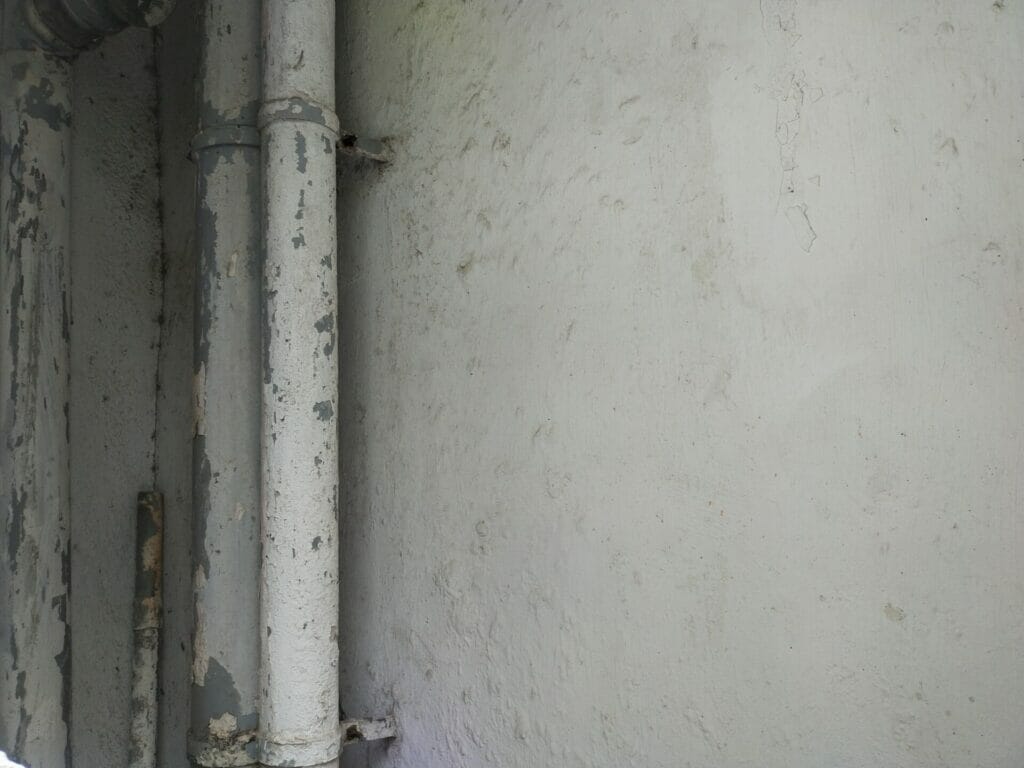

Pic: Shobana Radhakrishnan
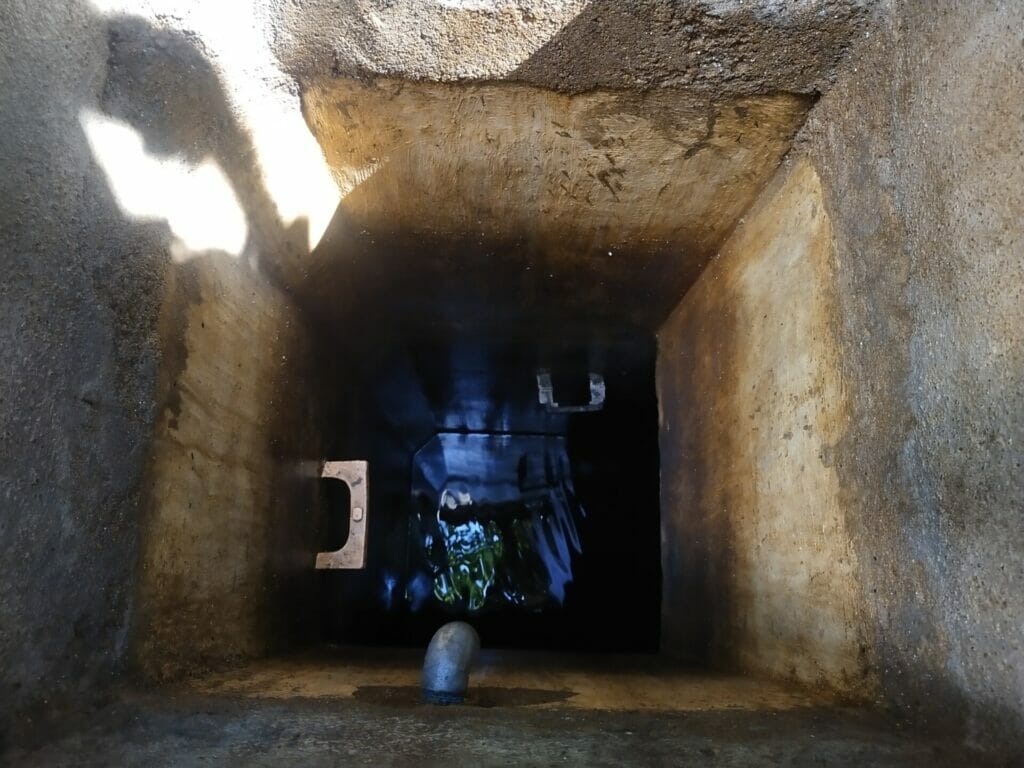

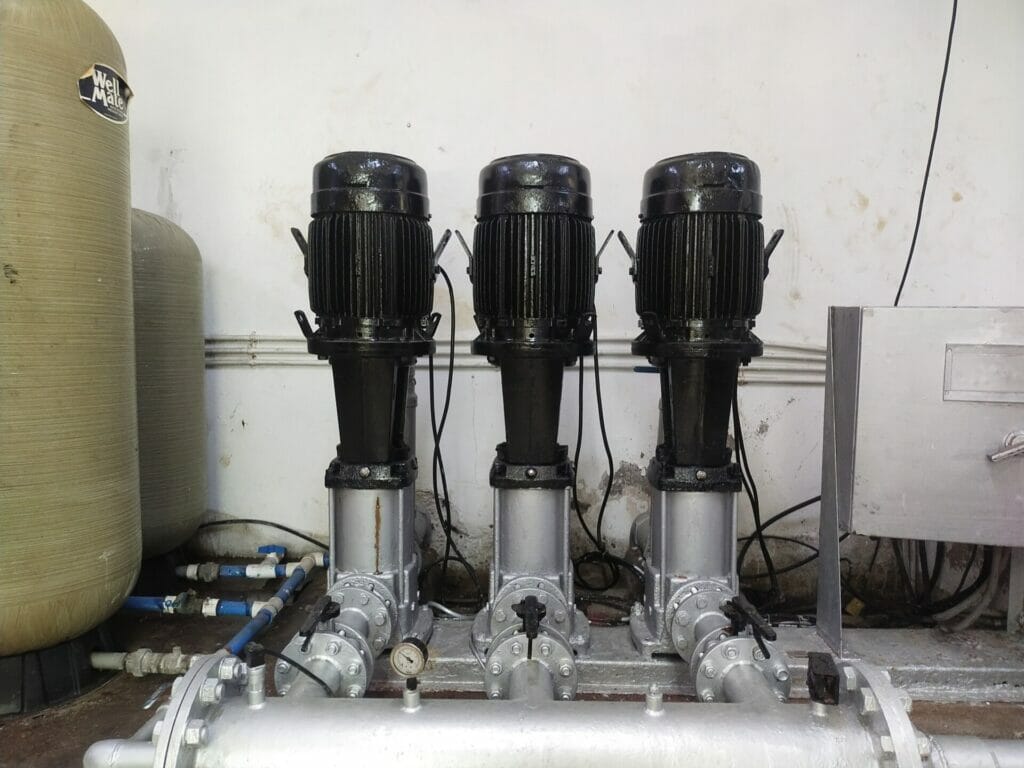
The processed water is used for domestic use like bathing, washing and cooking. Some individual households have also installed water purifiers to use this water for drinking purposes.
In-house STP helps to meet other water needs
Akin to how the building was installed with the rainwater harvesting structures when the building was constructed, the building also has an in-built STP. The STP recycles the water used for domestic purposes and uses it for gardening and toilet flushing. This also reduces their dependency on private tankers.
There are five bed-chambers in the apartment in which the raw sewage is collected. Some solid wastes like plastics are filtered and removed at these chambers. It is then pumped to the collection tank where the raw sewage water is collected.
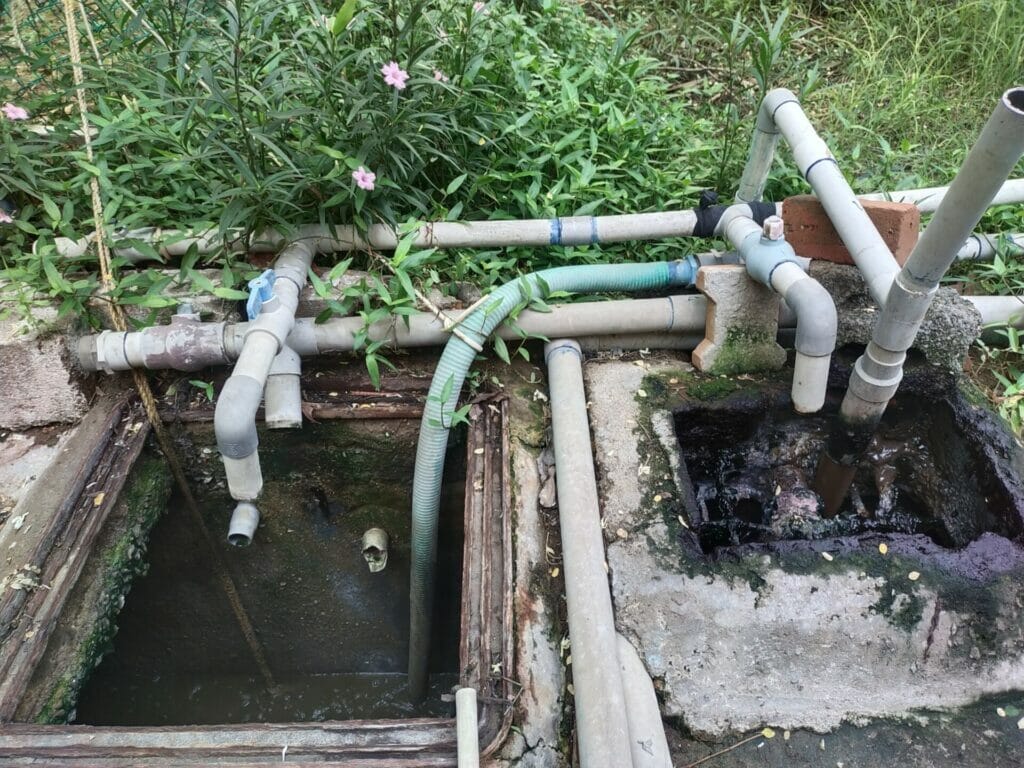
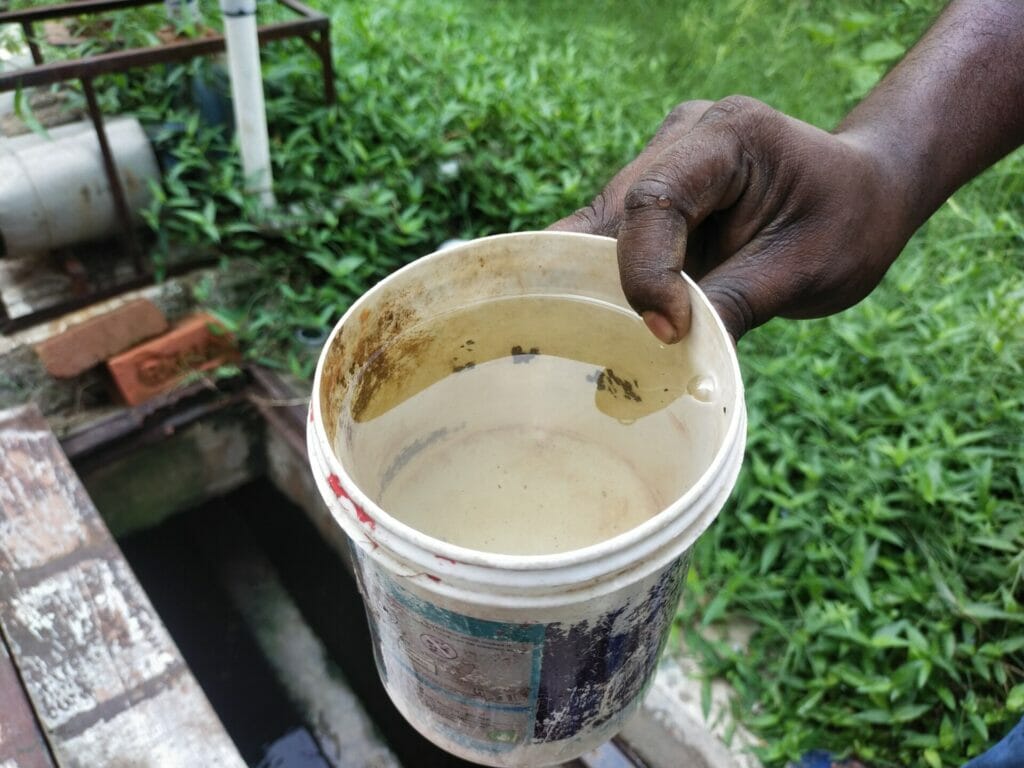
The in-built STP processes around 1 lakh litres of sewage water every day. This means that around 1 lakh litres of recycled water is used for gardening and flushing purposes every day. “The apartment complex including the gardening area is spread across 3 lakh sq ft. It is very unsustainable to buy private lorry water for gardening and flushing purposes,” say the residents.
The association charges Rs 4 per sq ft for each dwelling unit which includes charges for rainwater harvesting and STP maintenance.
It took over five years for the residents to adopt practices such as maintaining the terrace and desilting the rainwater harvesting pits regularly in order to reduce dependence on tankers.
Today, the residents of this apartment complex are able to use around 1 lakh litres of water from natural sources like rainwater and groundwater every day. Though they are not completely self-reliant yet, the model they have developed is one that all the residents, including the ones in the core city areas, can look to emulate.

Could conduct a sunday marathon on it for nextgen for a sustainable living to spread awareness. Well researched article.